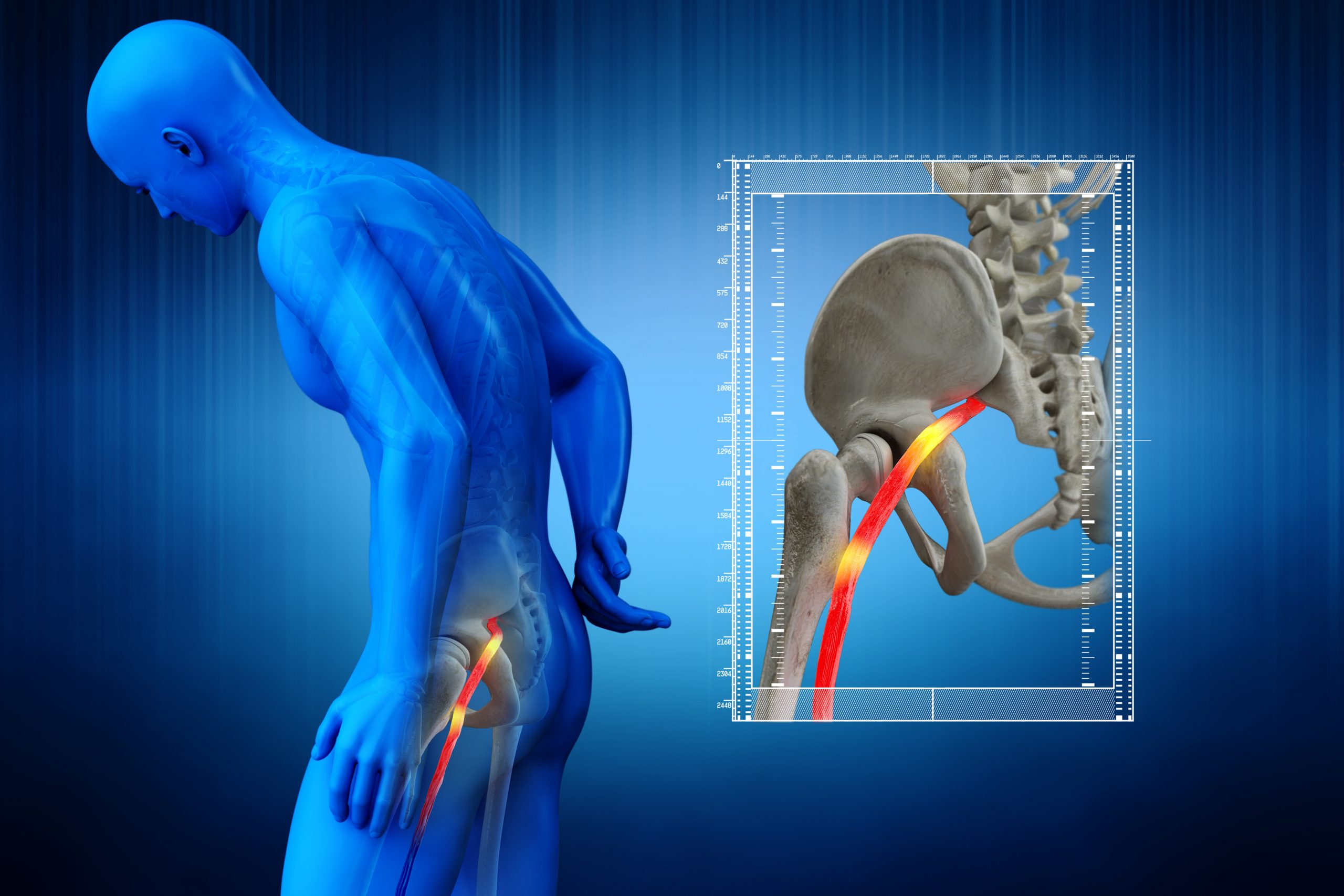Sciatica can, in many cases, be relieved or indeed removed by physical therapy. It does not have to be a long term condition
Have you ever been diagnosed with sciatica and are you still struggling with it? Maybe you always have pain in one buttock or leg and have just gotten used to it?
If I had a pound for every single new client that lists sciatica as one of the conditions that they suffer with, I would be rich. The thing that always surprises me is that, in many cases, clients are not coming to me because of their sciatica but for other issues. It’s almost as if they have come to accept that sciatica is something that they have to live with.
Does this sound like you?
If yes, then you should know that sciatica can, in many cases, be relieved or indeed removed by physical therapy. You do not need to suffer. If you have suffered with sciatica, had MRI scans and have been assured by a medical professional that you have no issues with your spine or serious conditions that are causing your sciatica, then this is especially true.
A couple of weeks ago, a new client came to see me. He advised that he had been suffering with sciatica for around 30 years. It was initially diagnosed when he was a teenager and this diagnosis had been confirmed by many different therapists over the years. Despite seeing lots of people, having various MRIs, scans and treatments , he was still struggling with sciatica. To make matters worse, in order to minimise the pain in his leg and also because he had a very physical job he had adapted his movements and posture to compensate and thus was now also suffering with neck, shoulder, hip, lower back and knee pain as well as the original sciatica. He was trying to manage his pain with regular deep tissue massages and pain killers. He came to me because he just wanted another deep tissue massage.
After carrying out a few simple assessments, I was able to diagnose the likely cause of his specific issue, treat him and give him some stretches and strengthening exercises to do at home. 10 days later he returned for his follow up appointment and happily reported that, for the first time in 30 odd years, he was not suffering with sciatica. He was on top of the world and we are now focusing on sorting out his other pain issues.
So what is sciatica?
It is an umbrella term to describe pain that can travel from your butt, down the back of your leg, to your feet. The pain is typically a constant burning sensation or a shooting pain but can include numbness, tingling or a weakness may be present. You may also have pain that gets worse with movement, or pins and needles in you feet or toes.
It is caused by irritation or compression of the sciatic nerve which runs from the lower back and also runs down the back of your legs to your feet. The sciatic nerve is long and wide in diameter and it shares its space with other bony structures and muscles, which can impinge or compress it.
Sciatica rarely presents in the back so if you have back pain this will probably be caused by something else.
When sciatica is serious and you should see your GP
If you have pain in both legs , numbness in the groin area, any kind of disturbance or loss to your bowel or bladder function or any disturbance to your normal walking pattern including leg weakness, then you should definitely go and see your GP first . Also if the pan comes on after a severe injury or accident .
Why does sciatica occur?
It may occur because the nerve is being impinged or compressed at its root in the lower back. This can be caused by a number of spinal issues such as disc bulges, degenerative disc disease, arthritis, or spinal stenosis.
It can also occur if the nerve is being impinged by muscles surrounding the nerve, muscles like your piriformis , glutes or hamstrings.
Less common causes of sciatica include nerve compression by a tumour or nerve damage by a disease such as diabetes.
If you have had back issues in the past, then these may well be a factor. Likewise past injuries , any issues with your hips , even flat feet can be contributory factors so do bear that in mind and make sure you advise your therapist of any such issues.
Any good therapist should be able to determine, with a few simple tests and a comprehensive history of any injuries or pain issues, where the impingement is likely to be occurring, and then advise and or treat accordingly . Advice may range from actually getting imaging tests such as X-rays or MRIs to establish what is causing the nerve root impingement to stretching and strengthening certain muscles.
So, in summary if you are suffering with sciatica please don’t suffer in silence. At the very least, visit your doctor, especially if you have been suffering for a month or longer or you are experiencing any of the more serious symptoms mentioned above. If your doctor has confirmed that there are no serious issues, then you can get your sciatica sorted. Don’t be like my client, suffer for 30 odd years and cause lots of other issues for himself as a result. Go and see a professional and get to sorted !




